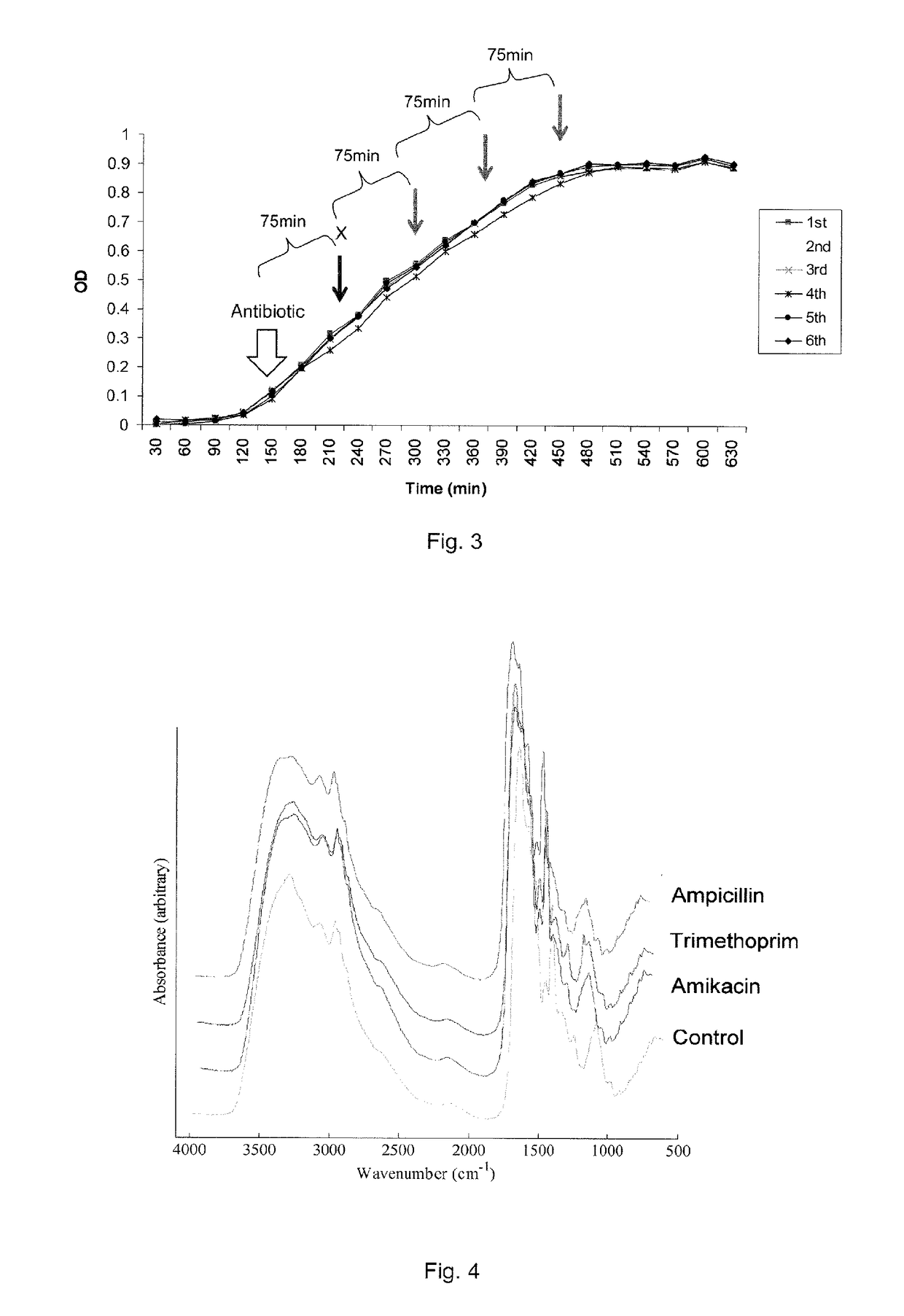A method of analysing a sample including a microorganism of interest
a microorganism and sample technology, applied in the field of methods of analysing samples including microorganisms, can solve the problems of spectroscopy signal weaker, sample drying prior to analysis, etc., and achieve the effect of maintaining the viability of the microorganism
- Summary
- Abstract
- Description
- Claims
- Application Information
AI Technical Summary
Benefits of technology
Problems solved by technology
Method used
Image
Examples
Embodiment Construction
[0212]FIG. 1 shows an example method of analysing a sample including a microorganism of interest, which may include:[0213]exposing the sample to an antimicrobial (10);[0214]after exposing the sample to the antimicrobial, applying an absorption-based and / or scattering-based spectroscopic technique (e.g. using the spectroscopic device 110, see below) to the sample to obtain spectrum data (20) whose spectral profile has been influenced by exposing the sample to the antimicrobial;[0215]obtaining information regarding the susceptibility / resistance of the microorganism of interest to the antimicrobial from the spectrum data (30).
[0216]In some embodiments, the step of obtaining information (30) may include:[0217]using multiple data points within the spectrum data to obtain spectral profile data which represents the spectral profile of the spectrum data; and[0218]obtaining information regarding the susceptibility / resistance of the microorganism of interest to the antimicrobial from the spec...
PUM
 Login to View More
Login to View More Abstract
Description
Claims
Application Information
 Login to View More
Login to View More - R&D
- Intellectual Property
- Life Sciences
- Materials
- Tech Scout
- Unparalleled Data Quality
- Higher Quality Content
- 60% Fewer Hallucinations
Browse by: Latest US Patents, China's latest patents, Technical Efficacy Thesaurus, Application Domain, Technology Topic, Popular Technical Reports.
© 2025 PatSnap. All rights reserved.Legal|Privacy policy|Modern Slavery Act Transparency Statement|Sitemap|About US| Contact US: help@patsnap.com



